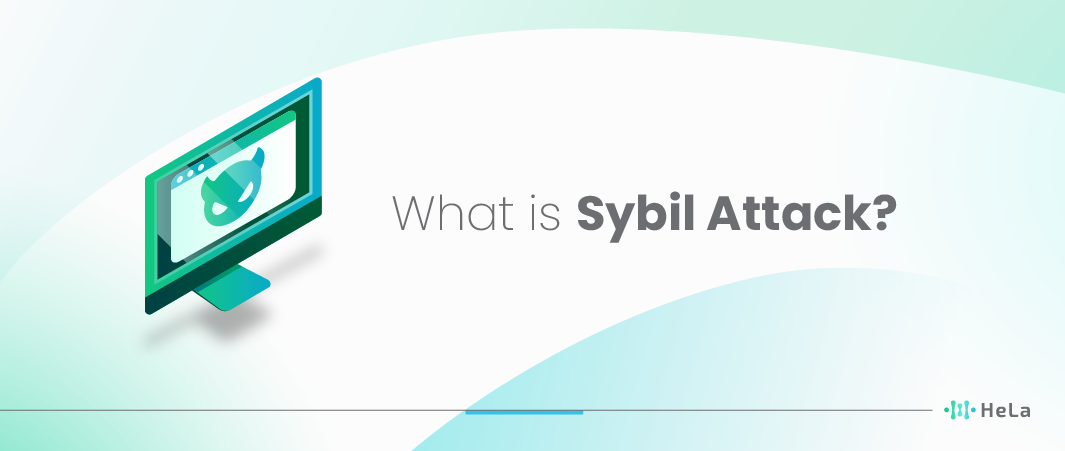In the rapidly changing world of blockchain tech, keeping things secure is a big deal. Picture this: there’s this sneaky move called the Sybil Attack, and it’s a real headache for blockchain networks. This tricky maneuver has the potential to mess up the trust and decentralization vibe that blockchain is all about. So, let’s get into it—what’s this Sybil Attack all about, how does it mess with the core of blockchain trust, and what smart folks have come up with to tackle this mess.
Now, Sybil Attack, it’s like the ninja move of the blockchain world. Sneaky and malicious, it’s a real threat to the whole trust and decentralized setup that makes blockchain tick. Imagine someone creating a bunch of fake identities to control or manipulate a network—yeah, that’s the Sybil Attack at play. This is bad news for the integrity of blockchain, which relies on trust and openness.
So, what is Sybil Attack? Well, smart minds in the blockchain realm have been on it. They’re cooking up solutions to sniff out and block these fake identities. It’s like building a digital bouncer for the blockchain party, making sure only the legit players get in. These innovations are crucial for keeping the trust and decentralization dream alive in the blockchain game.
What Is Sybil Attack?

A Sybil Attack, inspired by the case of Sybil Dorsett in psychology, is a sneaky move used by troublemakers to mess with the safety of blockchain networks. Picture this: one bad actor decides to play a tricky game. They create a bunch of fake identities or nodes on the network, kind of like making a whole gang of look-alikes. These fake nodes pretend to be regular folks, but because there are so many of them, the attacker can mess with how the network makes decisions, basically taking control of important processes. That’s what we call a Sybil Attack.
Now, let’s break it down a bit more. Imagine you’re at a big party, and suddenly, a group of impostors shows up, all claiming to be your friends. That’s what the Sybil Attack does to a blockchain network. By creating a bunch of these fake nodes, the attacker can throw the whole system off balance. It’s like having a bunch of fake votes in an election – they might look real, but they’re just there to mess things up.
To make it worse, these fake nodes can start influencing the decisions made by the network. It’s like if the impostors at the party started suggesting what music to play or where to order food. In the tech world, we call this manipulating the consensus mechanism. So, when you hear about a Sybil Attack, think of it like a party crasher bringing a whole bunch of fake friends to take over the playlist and make everyone’s night a bit more chaotic.
Also Read: What Is Solidity Interface? A Comprehensive Guide with Practical Examples
Impact on Blockchain Integrity
A Sybil attack is a type of attack on a network in which an adversary can subvert the network by creating and controlling a large number of pseudonymous identities. This type of attack is particularly relevant in the context of blockchain systems, where the integrity and security of the network rely on the distributed and decentralized nature of participant nodes. Here are some key impacts of a Sybil attack on blockchain integrity:
Double Spending
In a blockchain, double spending is a critical issue. It occurs when a user spends the same cryptocurrency more than once. A Sybil attacker, by controlling a significant portion of the network nodes, can potentially create multiple copies of the blockchain and execute double spending attacks.
51% Attack
A Sybil attack can be a precursor to a 51% attack. In many blockchain systems, if an attacker controls more than 50% of the network’s computational power, they can manipulate the blockchain by confirming fraudulent transactions, reversing transactions, and preventing new transactions from being confirmed.
Consensus Mechanism Manipulation
Blockchain networks often rely on consensus mechanisms like Proof of Work (PoW) or Proof of Stake (PoS) to secure and validate transactions. In a Sybil attack, an adversary may amass enough computational power or stake to manipulate the consensus mechanism, undermining the trust and security of the network.
Data Tampering
The decentralized and distributed nature of blockchain relies on the assumption that a majority of nodes are honest. In a Sybil attack, where an attacker can create a large number of malicious nodes, they may be able to alter transaction data, compromise the integrity of the blockchain, and introduce inconsistencies.
Denial of Service (DoS) Attacks
A Sybil attacker can potentially launch denial-of-service attacks by overwhelming the network with a large number of malicious nodes. This could lead to disruptions in the normal functioning of the blockchain, slowing down transaction processing or causing the network to become temporarily unavailable.
Erosion of Trust
Trust is a fundamental aspect of blockchain technology. A Sybil attack erodes trust in the network by creating doubt about the authenticity of transactions and the overall integrity of the blockchain. This can lead to a loss of confidence among users and stakeholders.
To mitigate the impact of Sybil attacks, blockchain systems often implement various security measures, such as strong consensus mechanisms, cryptographic techniques, and network monitoring. Continuous research and development in blockchain security are crucial to staying ahead of potential threats and ensuring the robustness of decentralized systems.
Vulnerable Sectors and Real-World Examples

Certain blockchain networks and sectors are more vulnerable to Sybil Attacks than others. For example, public blockchains with open participation are at higher risk due to their accessibility. In recent years, there have been instances of Sybil Attacks in various blockchain projects. Here are some vulnerable sectors and real-world examples of Sybil attacks:
Peer-to-Peer Networks
In peer-to-peer file-sharing networks, a Sybil attack could be used to flood the network with malicious nodes, manipulating the availability of files or spreading corrupted files.
Decentralized Cryptocurrencies
In a blockchain network, a Sybil attack could be launched to control a significant portion of the network nodes, potentially leading to a 51% attack where the attacker could manipulate transaction histories or double-spend coins.
Online Reputation Systems
Sybil attacks can be directed towards online reputation systems, such as those used in e-commerce platforms or social networks. A malicious actor creates multiple fake accounts to artificially boost their reputation or ratings.
Distributed Computing Systems
In distributed computing projects, like those involved in scientific research or data analysis (e.g., SETI@home), a Sybil attack could be used to introduce false or manipulated data into the system.
Wireless Sensor Networks
In systems that rely on wireless sensor networks for data collection, a Sybil attack could involve deploying numerous fake sensor nodes to distort or disrupt the accurate collection of environmental data.
Online Auctions
In online auction platforms, a Sybil attack could involve creating multiple fake accounts to manipulate bidding processes or to discourage genuine participants.
Social Networks
Social networks can be vulnerable to Sybil attacks when fake profiles are created to spread misinformation, conduct social engineering attacks, or influence public opinion.
Mitigating Sybil attacks often involves implementing identity verification mechanisms, such as proof-of-work or proof-of-stake in blockchain systems, reputation scoring systems, and network-level defenses to detect and isolate suspicious nodes. It’s an ongoing challenge, and different systems may require tailored solutions based on their specific vulnerabilities and requirements.
Also Read: Crypto Market Sentiment: Impact on Cryptocurrency Valuations
Countermeasures Against Sybil Attacks
Fortunately, the blockchain community is not sitting idly by. Several innovative countermeasures have been developed to mitigate the risks posed by Sybil Attacks. These include:
Proof-of-Work (PoW)
One of the earliest and widely adopted countermeasures is the use of Proof-of-Work consensus algorithms. PoW requires participants to solve computationally intensive puzzles before adding a new block to the blockchain. This process makes it economically and computationally expensive for a single entity to create multiple fake identities and control the network.
Proof-of-Stake (PoS)
Unlike PoW, PoS selects block validators based on the amount of cryptocurrency they hold and are willing to “stake” as collateral. This method reduces the incentive for attackers to create numerous fake identities since the probability of being chosen to validate a block is proportional to the amount of cryptocurrency held.
SybilGuard and SybilLimit
These are specific protocols designed to detect and prevent Sybil Attacks. SybilGuard employs a social network-based approach, leveraging the trust relationships among nodes to identify and isolate potential Sybil nodes. SybilLimit, on the other hand, focuses on limiting the influence of individual nodes, preventing any single entity from controlling a disproportionate amount of the network.
Decentralized Identity Systems
Implementing decentralized identity systems, where each participant has a unique and verifiable digital identity, can help mitigate Sybil Attacks. This ensures that each entity participating in the network is a legitimate and distinct user.
Reputation Systems
Some blockchain networks utilize reputation systems to assign a reputation score to each participant based on their behavior and contributions to the network. Participants with higher reputation scores are given more influence, making it harder for attackers to amass influence through Sybil Attacks.
Token-based Sybil Resistance
This approach involves requiring participants to hold and use a native token to access certain privileges within the network. Acquiring a large number of tokens becomes a cost-prohibitive barrier for potential Sybil attackers.
Incentive Mechanisms
Introducing economic incentives for honest participation in the network and penalties for malicious behavior can discourage Sybil Attacks. This includes rewards for providing valuable services and punishing nodes that attempt to manipulate the system.
Whitelisting and Identity Verification
Some blockchain projects implement whitelisting and identity verification processes, where participants need to undergo a vetting process to join the network. This adds an additional layer of security against Sybil Attacks by ensuring that only trusted entities can participate.
Continuous Monitoring and Analysis
Regularly monitoring network activity and analyzing patterns can help identify potential Sybil Attacks in real-time. Automated systems can be deployed to detect unusual behavior or sudden increases in the number of nodes associated with a single entity.
By combining these countermeasures, blockchain communities aim to create resilient and secure networks that can withstand the threat of Sybil Attacks. It’s an ongoing process of refinement and adaptation as attackers continue to evolve their strategies.
The Importance of Vigilance and Community Effort

In the fast-paced world of blockchain, keeping things secure is a team effort. It’s not just about fancy tech solutions; it’s also about all of us staying on our toes. When it comes to Sybil Attacks, those tricky maneuvers where someone tries to game the system by creating multiple fake identities, we’ve got to be extra vigilant. Users, developers, and the folks running the nodes need to keep their eyes peeled for anything fishy and work together to make sure the whole network stays rock-solid.
And that’s where community spirit kicks in. We’re all in this together, after all. Setting up initiatives that encourage folks to keep an eye out for any signs of a Sybil Attack can really make a difference. It’s like a neighborhood watch, but for the blockchain. By sharing information and looking out for one another, we’re building a robust defense against any shady business. So, let’s keep our blockchain community strong and make sure it stays a place we can all trust.
Conclusion
In a nutshell, the Sybil Attack poses an ongoing and ever-changing challenge to the world of blockchain technology. This threat has the potential to seriously jeopardize the security and reliability of blockchain networks, making it a significant concern. The Sybil Attack involves creating multiple fake identities to manipulate a system, and its impact on the trustworthiness of blockchain networks should not be taken lightly.
To counter this menace, a combination of technological advancements, community awareness, and a strong commitment to blockchain security is crucial. As we navigate the decentralized technology landscape, staying vigilant and taking proactive measures against Sybil Attacks will play a pivotal role in safeguarding the continued success and integrity of blockchain networks. It’s essential for the industry to work collaboratively in implementing preventive measures and staying ahead of potential threats posed by the Sybil Attack.
Looking ahead, the awareness of the Sybil Attack and a collective effort to address its challenges will be integral in maintaining the robustness of blockchain networks. By fostering a proactive and informed approach, the industry can bolster its defenses and ensure a secure environment for decentralized technologies to thrive.
Disclaimer: The information provided by HeLa Labs in this article is intended for general informational purposes and does not reflect the company’s opinion. It is not intended as investment advice or recommendations. Readers are strongly advised to conduct their own thorough research and consult with a qualified financial advisor before making any financial decisions.

Joshua Soriano
I am a writer specializing in decentralized systems, digital assets, and Web3 innovation. I develop research-driven explainers, case studies, and thought leadership that connect blockchain infrastructure, smart contract design, and tokenization models to real-world outcomes.
My work focuses on translating complex technical concepts into clear, actionable narratives for builders, businesses, and investors, highlighting transparency, security, and operational efficiency. Each piece blends primary-source research, protocol documentation, and practitioner insights to surface what matters for adoption and risk reduction, helping teams make informed decisions with precise, accessible content.
- Joshua Soriano#molongui-disabled-link
- Joshua Soriano#molongui-disabled-link
- Joshua Soriano#molongui-disabled-link
- Joshua Soriano#molongui-disabled-link

